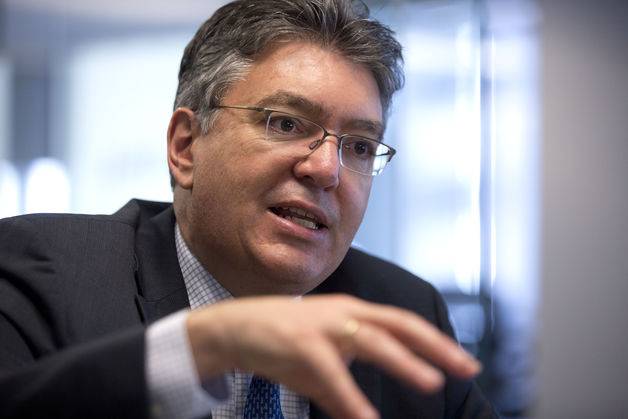(BLOOMBERG) Colombian policy makers may revise upward their estimate of how fast the economy can grow, giving the central bank more leeway to use low interest rates to boost growth, Finance Minister Mauricio Cardenas said.

The Andean nation’s high rate of investment appears to have increased the economy’s capacity, meaning that it can expand at a faster pace without stoking inflation, Cardenas said today in an interview in Cartagena. That would explain why inflation has fallen to a six-decade low even as gross domestic product growth accelerates, he said.
“Higher investment normally means higher growth so our estimate of potential GDP growth of around 4.5 percent may have to be revised upwards,” Cardenas said. “If that’s the case, and inflation remains below 2 percent, there might be a potential scenario that would call for either a prolonged period of time with the current monetary policy stance, or eventually, under some circumstances, a reduction in interest rates.”
Annual inflation fell to its lowest rate since 1955 last month, even as the economy grew at the fastest pace in the Andean region. The central bank held its policy rate at 3.25 percent for a ninth straight month at its December board meeting, after cutting borrowing costs seven times from July last year to March.
Central bank economists are preparing a report on potential GDP growth, which should be ready in time for the bank’s January policy meeting, Cardenas said.
“My sense is that potential GDP growth in Colombia is no longer 4.5 percent, it should be closer to 5 percent given what’s happening to the investment to GDP ratio,” Cardenas said.
Output Gap
The economy grew 5.1 percent in the third quarter from a year earlier on a rise in home building and an improved coffee harvest. That’s faster than regional peers including Brazil, Mexico, Peru, Chile and Venezuela, while trailing Argentina’s 5.5 percent growth. Investment rose to more than 29 percent of GDP last quarter, Cardenas said.
To cut interest rates, policy makers would need to see inflation below the 2 percent lower limit of its target for a prolonged period, combined with below-potential growth, said Cardenas, who chairs the central bank’s monetary policy meetings.
“The combination of an output gap and inflation below target would suggest the need of a futher reduction in interest rates,” Cardenas said. “We’re open to that discussion because we see that that scenario is possible. We’re not saying it’s likely, we’re just saying it’s possible.”
Inflation slowed to 1.76 percent in November, the lowest among major Latin American economies. Colombia targets inflation of 3 percent, plus or minus one percentage point.
One of Cardenas’ colleagues on the central bank’s seven-member policy committee, Adolfo Meisel, said in a Dec. 23 interview that policy makers are discussing whether to raise their estimate of potential GDP growth.
Depreciation
The peso gained 0.1 percent today, ending the year at 1,927.27 per dollar, which Cardenas says is around its “equilibrium” rate of between 1,900 and 1,950 per U.S. dollar. Colombian markets are closed until Jan. 2.
The currency depreciated 8.3 percent in 2013, its biggest fall since 2008 when it dropped 10.3 percent. Before its decline, Cardenas repeatedly referred to a strong peso as “the mother of all problems”.
“The exchange rate is close its equilibrium and what I see is an exchange rate that will remain close to the equilibrium with a slight trend towards depreciation, essentially because of changes in U.S. monetary policy,” Cardenas said.